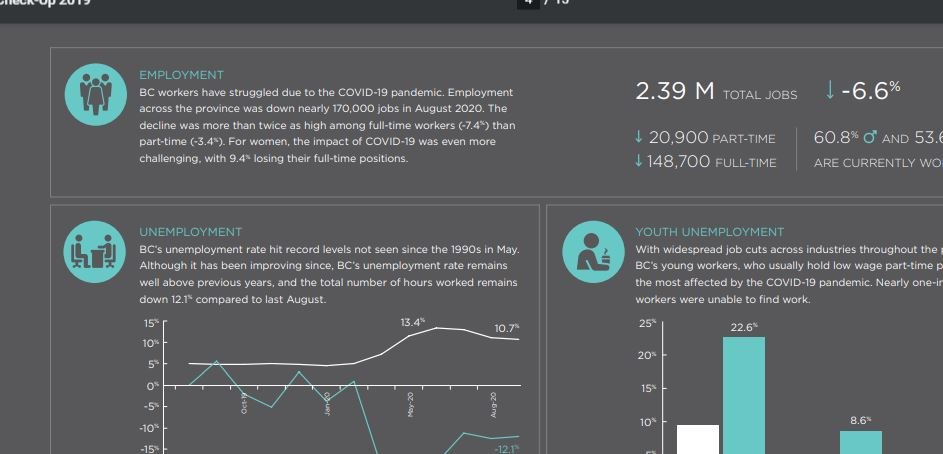“In a matter of weeks, the COVID-19 pandemic undid almost a decade of steady employment gains.”
That’s the stark message from Lori Mathison, president and CEO of the Chartered Professional Accountants of British Columbia (CPABC).
According to a “BC Check-Up: Work, an annual report by the on employment trends across the province,” the province’s unemployment rate was 10.7 per cent in August 2020.
“While the unemployment rate fell to 8.4 per cent in September, it remains 1.75 times higher than last year and many displaced from their jobs are finding limited opportunities,” added Mathison.
Despite continued progress in September, employment across the province remains down 106,300 positions when compared to September 2019, representing a 4.2 per cent decline.
Making matters more challenging, job losses are now entirely concentrated amongst full-time positions, down 117,400. This was partially offset by an 11,100 part-time job gain.
For much of the pandemic, job losses were concentrated in the service sector due to its strong reliance on tourism/travel, office services, and close physical interaction.
At the peak of job losses in April, the service sector’s annual decline was considerably higher than for the goods sector (-17.4% vs 12.4%, respectively).
However, by September a stronger return of service jobs brought the two sectors’ employment declines to nearly the same level when compared to last year (-4.2% vs -3.9%, respectively).
In September 2020, industry employment was down the most in construction (-14.0%); information, culture and recreation (-11.4%); and personal and household services (-11.1%), relative to last year.
“Despite progress, warning flags remain. Full-time positions necessary to return to pre-crisis output levels remain depressed. Meanwhile, the construction industry’s workforce, a major driver of economic growth in B.C., has fallen to lows not seen in five years,” continued Mathison.
“We also expect job growth to slow going forward. Much was initially propelled by government support, such as the wage subsidy, and the reopening of businesses over the summer. As a result, B.C.’s unemployment will remain high through the rest of the year and into 2021.”
BC Check-Up: Work also focuses on employment displacement by age and gender. Amongst the findings:
• Youth unemployment rate (aged 15-24) hit 22.6 per cent in August, two-and-a-half times higher than last year. This improved to 15.9 per cent in September, but remains 6.8 percentage points higher than last September.
• The number of women employed in full-time positions declined by 9.4 per cent in August compared to last year, nearly twice the impact COVID-19 had on male full-time workers. This gap grew in September, to -8.7 per cent and -3.6 per cent, respectively.
“There is a long road to recovery ahead of us and unfortunately, some jobs will be lost permanently. In this transitionary period, it is critical that we support those most disrupted by the COVID-19 pandemic through targeted skills training so displaced workers are not left behind and can help rebuild our economy,” concluded Mathison.
“British Columbia can come out of this stronger if we make smart, thoughtful investments to create a more resilient and productive workforce.”



